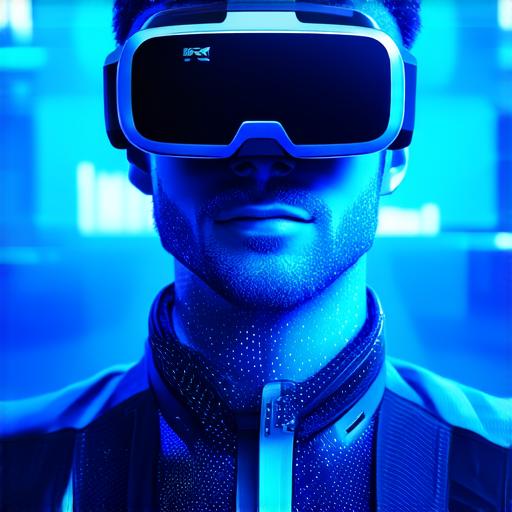
How Virtual Reality Operates
Components of Virtual Reality
The main components of a VR system are the headset, sensors, controllers, and computer.
- The headset is worn on the user’s head and displays stereoscopic images that create the illusion of depth and three-dimensionality.
- Sensors track the movement of the user’s head and adjust the images accordingly to create a seamless experience.
- Controllers allow users to interact with virtual objects by mimicking real-world gestures such as pointing, grabbing, and wielding weapons.
- The computer processes the data from the sensors and generates the graphics needed for the VR environment.
Technologies Used in Virtual Reality
There are several technologies that are used in virtual reality, including display technology, tracking technology, and motion capture.
Display Technology
Display technology includes screens that display stereoscopic images. These screens use polarizing filters to create the illusion of depth and three-dimensionality.
Tracking Technology
Tracking technology uses sensors to track the movement of the user’s head and adjust the images accordingly. This can be done using optical or magnetic tracking systems.
Motion Capture Technology
Motion capture technology involves capturing the movements of an object in real-time and using that data to create realistic animations in virtual reality.
Best Practices for Virtual Reality Development
- Keep it simple: Virtual reality can be overwhelming for new users, so it’s important to keep the user interface simple and easy to use.
- Focus on immersion: The goal of VR is to immerse the user in a virtual world, so developers should focus on creating an environment that feels as realistic as possible.
- Optimize for performance: Virtual reality can be resource-intensive, so developers should optimize their code for performance to avoid lag and motion sickness.
- Test extensively: Developers should test their VR experiences extensively to ensure that they are bug-free and provide a good user experience.

Real-life Examples of Virtual Reality in Action
Virtual reality is being used in a variety of industries, including gaming, healthcare, and education. For example:
- In gaming, virtual reality allows players to fully immerse themselves in the game world and interact with characters and objects in a more realistic way.
- In healthcare, VR can be used for training medical professionals or for therapy sessions for patients with conditions such as PTSD or anxiety disorders.
- In education, VR can be used to create virtual field trips or to provide students with interactive learning experiences.
FAQs
1. What is the difference between VR and AR?
Virtual reality creates a fully immersive environment in which the user is not aware of their real-world surroundings, while augmented reality overlays digital information onto the real world.
2. Is virtual reality addictive?
Yes, virtual reality can be addictive for some users due to its immersive nature.
3. What are the potential health risks associated with VR?
Some users may experience motion sickness or disorientation when using VR, and there is a risk of injury if users trip or bump into objects in the virtual world.


